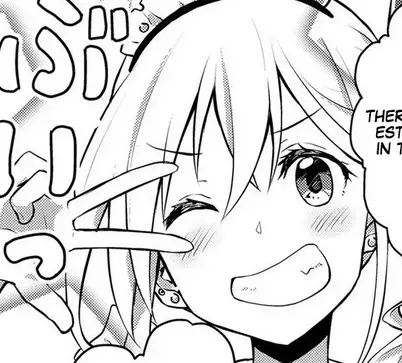

One thing that would immediately kill the people smuggling industry is allowing people to claim asylum in Calias, but they’ll never do that.
Interior Minister Yvette Cooper
She’s home secretary, Britain doesn’t have an interior minister?


One thing that would immediately kill the people smuggling industry is allowing people to claim asylum in Calias, but they’ll never do that.
Interior Minister Yvette Cooper
She’s home secretary, Britain doesn’t have an interior minister?
What about JSON-LD makes it so they have to include the “this is public” declaration in the to field instead of having an as:public property on the object? (I don’t know a whole lot about JSON-LD or RDF more broadly)


Etherium actually transitioned to proof-of-stake? Last I heard it was something they were planning to but it was being delayed for years. Good for them for actually doing it, I still don’t trust the technology and refuse to use anything that integrates it, but at least it’s not so actively destructive.
Mastodon doesn’t have Group support (fep-1b12), so when they reply to a post, they don’t send it to the community’s inbox (only to the inbox of the Person they’re replying to), thus breaking Lemmy’s model of federation.


DNS is not the future, crypto is the future.
There are other alternatives to DNS that don’t require you to boil the oceans, e.g. GNUnet has their own thing.
In our clients, we will decentralize this curation via gasless pubsub voting by token holders. There’s no other way to decentralize it, so this is another thing that crypto excels at (DAOs).
This isn’t decentralising the whitelist/default subs, it’s shareholder-ising. It’s also just recreating the notion of admins in ActivityPub, or replay controllers in notstr. You still have a set of privileged users able to make decisions for others, albeit less privileged than AP admins.


As the FAQ says, the base protocol doesn’t use tokens.
I don’t care what the protocol technically makes feasible, people don’t use protocols they use software that interprets protocols. ActivityPub doesn’t actually require DNS, but you (correctly) say it does because there’s no software out there people will use that doesn’t require DNS. The point is you still tied human readable names to the blockchain, something absolutely not optional for social media software. No one is going to be like “you should sub to p/nrlaoii2nsl2, the memes are 🔥”.
NFT profile pics tied to a user’s plebbit account, because we whitelist the specific NFT collections to prevent NSFW profile pics
Who is “we” here and why do they get to decide what’s acceptable in my community (‘subpleb’ if you will)?


From the FAQ linked on the site:
Q: Is this running on ETH? A: the token is on ETH, the plebbit protocol itself it not a blockchain, but the app will use several blockchains, tokens and NFTs to recreate all the features from reddit, like usernames, subplebbit names will be crypto domains like ENS (and other chains), awards will be NFTs, tips and upvotes will earn tokens (can set them to your own token or any coin of your choice in your subplebbit)
[…]
Q: What role does the PLEB token play? A: The base protocol doesn’t use tokens, which lets people who don’t have interest in cryptocurrency (yet) use it for free, but optionally you can use any tokens to do many things, for example you can use names.eth (ENS, which are non fungible tokens) to represent a username or subplebbit name. You can use NFT images as avatars. You can use fungible tokens and NFTs (any token or cryptocurreny of the subplebbit owner’s choice) to vote, curate, reward, tip, incentivize and/or as spam protection (instead of using captchas, require users of your subplebbit to own, stake, burn or pay a certain amount of a token/NFT of your choice to post/upvote). A subplebbit’s name like memes.eth (becomes /p/memes.eth) could be owned by a DAO, and owners of the DAO’s tokens could vote on chain for who gets to be admin and moderator of the subplebbit, i.e. a smart contract/DAO can be owner of a subplebbit.
This sounds fucking awful. You want a peer-to-peer network, but decided to tie critical features to the blockchain, something arguably less decentralised than APub software.
I assume that if someone from a new instance (D) subscribes to foo, then D will need to request all the old posts from foo, since they weren’t pushed to D?
Lemmy is pretty bad about backfilling content. Communities do have outboxs, but these only list the last 50 posts and you can’t get the vote or comments on any of them. See GitHub issues #5283, #3448 and #2004.
I actually don’t know, you’d need to ask someone privy to design decisions made with ActivityPub, like Prodromou or Lemmer-Webber. It’s definitely not to avoid making it part of the protocol, because it already is (see the link in the last comment).
No, the https://www.w3.org/ns/activitystreams#Public is just there to indicate that it’s ok for receiving instances to display this publicly, nothing actually gets sent to it. See the spec for more details.
alice from A makes a post “Hello, world” to B
Alice can’t make a post to B, but I assume you mean a community on B, let’s call it foo. When Alice makes a post it first goes through A’s local API and creates the local (and canonical) version of Alice’s post. Once A has finished processing Alice’s post, it will create an ActivityPub representation of Alice’s post to send to B.
ActivityPub is basically a bunch of assumptions laid on top of JSON. An ActivityPub ‘file’ can be divided into broadly 3 types, Object, Activity and actors.[1] These types then have subtypes; for example, both Alice and foo are actors but Alice is a Person while foo is a Group.
A second important assumption of ActivityPub is the concept of inboxs and outboxs, but, for Lemmy, only inboxs matter. An inbox is just a URL where Lemmy can send activities and it’s something all actors have.
So when instance A is finished processing Alice’s post, it will turn it into a Page object, wrap that in a Create activity and send it foo’s inbox.
{
"@context": [
"https://join-lemmy.org/context.json",
"https://www.w3.org/ns/activitystreams"
],
"actor": "https://a/u/alice",
"type": "Create",
"to": ["https://www.w3.org/ns/activitystreams#Public"],
"cc": ["https://b/c/foo"],
"id": "https://a/activities/create/19199919009100",
"object": {
"type": "Page",
"id": "https://a/post/1",
"attributedTo": "https://a/u/alice",
"to": [
"https://b/c/foo",
"https://www.w3.org/ns/activitystreams#Public"
],
"audience": "https://b/c/main",
"name": "Hello world",
"attachment": [],
"sensitive": false,
"language": {
"identifier": "en",
"name": "English"
},
"published": "2024-12-29T15:10:51.557399Z"
}
}
.
Now instance B will then receive this and do the same kind of processing A did when Alice created the post via the API. Once it has finished, it will turn the post back into a Page but this time wrap it in an Announce activity. B will then look at all the actors that follow the foo (i.e. are subscribed to it) and send this Announce to all of their inboxs. Assuming a user on instance C follows foo, it will receive this Announce and process it like A and B before it, creating the local version of Alice’s post.
Edit: I made a small mistake, I said that foo wrapped the Page in an Announce, when it actually wraps the Create in an Announce.
Technically, Activity and actors are themselves objects, but they’re treated differently. There’s also Collection’s which are their own type, but Lemmy doesn’t really utilise them. ↩︎


I thought Ukraine celebrated Orthodox Christmas, but turns out this was changed last year.
They do, at least, acknowledge this:
We recognise that this Annual Report for 2023 is arriving later than we had intended. Going forward, we plan to release our Annual Report for 2024 in Q1 of 2025, where we will establish clear and ambitious goals for 2025 and beyond. This adjusted timeline allows us to provide more timely insights and better align our reporting with our ongoing growth and development.


They don’t strip out the markdown on the bluesky side, so posts are just full of junk. Weird choice given the focus on ‘seamless’ integrated between the two.


It’s because YouTube puts a bunch of JavaScript at the start of the file (1MiB) before the opengraph tags and Lemmy only fetches the first 512 KiB (a fix was merged a couple days ago).
It seems the bridge didn’t see the reply. Might be something worth making a bug report about. (Also, ignore the update profile entry, I clicked the icon by accident)


Your reply is there? Did it just take a while to go through?


You can, it’s just that individual accounts need to opt into the bridge.



At this rate, the closest thing to a new Disco Elysium we’re getting is the book on all these disputes.
It was added in 0.19.6, so older instances won’t have it. Edit: read the rest of the thread and you already pointed this out, d’oh.